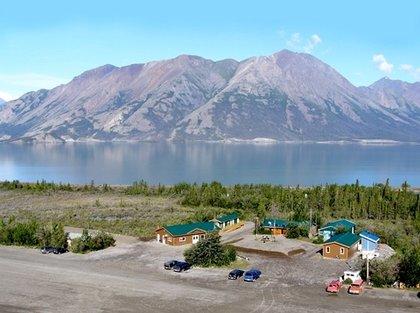May 19, 2017
Kluane Lake Research Station tests Yukon's first hydroponic growing system

This series celebrates University of Calgary community-partnered outreach projects as part of Science Odyssey, Canada’s largest celebration of discovery and innovation and for the way science shapes our daily lives.
This fall, right about the time Calgary gardeners are putting away their shovels and gloves for the winter, researchers at the Kluane Lake Research Station (KLRS) in the Yukon will start planting their first solar-powered hydroponic crop of spinach.
KLRS, 220 kilometres northwest of Whitehorse, is combining two known technologies: a hydroponic system called Cropbox from the U.S. and clean energy from Solvest, a Yukon provider of solar power systems. They’ll wrap the Cropbox in a thermal blanket, plant some seeds, and see whether it can withstand the North’s -40C winter temperatures to grow affordable produce.
“This is primarily about food security,” says Henry Penn, a postdoctoral researcher with the Arctic Institute of North American (AINA) at UCalgary. “It’s addressing the need of northern First Nations and other communities for food, specifically quality fresh produce year-round.” Right now, many northerners have to drive upwards of 200 kilometres to get to a grocery store, where produce and other food can be prohibitively expensive.
Lettuce and spinach, or potatoes and carrots?
In the south, Cropboxes can grow the equivalent of two acres of farmland in growing cycles of eight to 12 weeks. “We are going to have to figure out what crops can grow but also take into account what communities want to grow,” says Penn, who studies food-energy-water systems in northern communities. “Your lettuces, spinaches and kales are great during the summer when you want a salad, but when its deepest, darkest, winter do you want a salad or a good bowl of potatoes and carrots?”
Once the researchers figure out all the “knobs and whistles” of how to grow in the Cropbox, they’ll hand it over to the Kluane Lake First Nation to find out what they want planted. “If it works, it works. If it doesn’t, we will take a step back and figure out why it didn’t work and then go again,” says Penn, who is looking for investors and partners for the project. “It will be the first time this kind of solution has been installed in the Yukon.”
The whole research project started with a conversation. Penn was talking with Solvest about using solar to power the research station and reduce its reliance on diesel generators. The solar provider, meanwhile, was looking to try hydroponic growing because of the high cost of food in the North.

Kluane Lake Field Station, at the shore of Kluane Lake in the southwest corner of the Yukon.
Lance Goodwin, via Wikimedia Commons
Potluck next summer could be one measure of project success
“We’ll look at whether the technology is viable and we will find out whether a solar system is an economic way of running not just the research station but the Cropbox itself,” says Penn. “Using solar power, we expect to see a 50 to 80 per cent reduction in how much diesel we burn at the research station.”
Next summer, there will be a thorough operational and economic analysis of the Cropbox involving AINA, KLRS, Solvest, the Kluane Lake First Nation and the Arctic Institute of Community Based Research. The ultimate goal is to be able to provide communities, mining camps and others with information about how much it would cost to install a Cropbox and produce fresh food in the North.
If all goes well, next spring as Calgary gardeners start getting their shovels and gloves out, Penn will be enjoying a harvest party. “Ideally, we will have an early summer potluck celebration and eat all the crops that we’ve grown over the winter."
Everyone welcome to attend open house June 17, learn about research, propose ideas
Everyone is welcome to attend the KLRS annual open house June 17 to learn about all the research, ask questions and propose ideas for other research projects. The AINA Board of Directors, KLRS Research and Education Advisory Committee, local businesses, community leaders and others will be on hand.
Powered by NSERC, Science Odyssey is Canada's largest celebration of science, technology, engineering and mathematics, featuring fun and inspiring experiences in museums, research centres, laboratories and classrooms from coast to coast.
